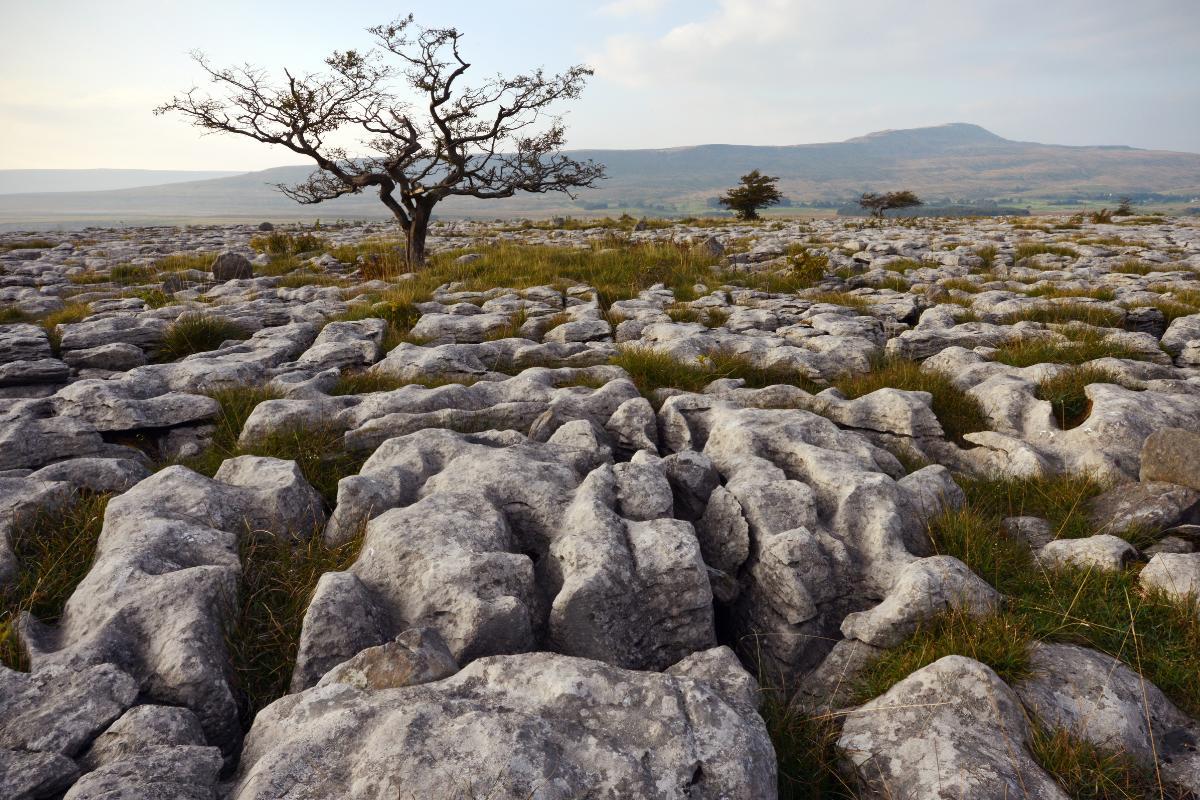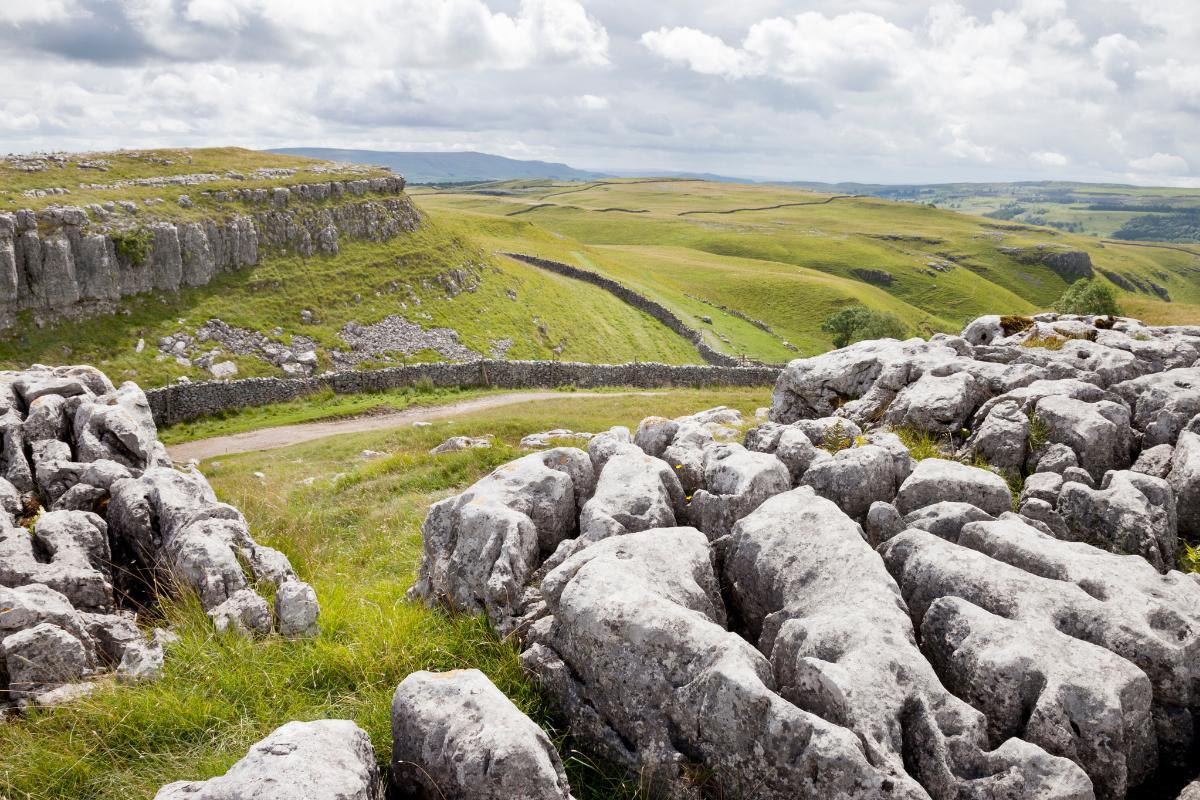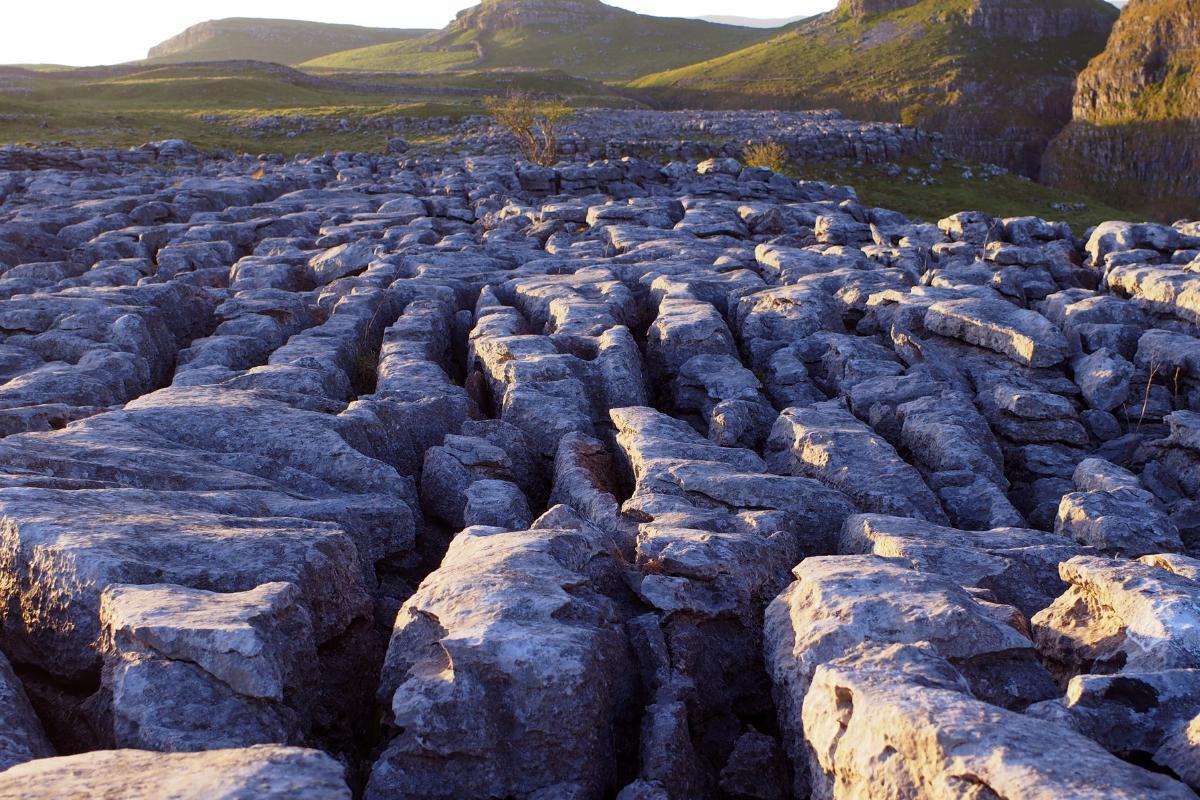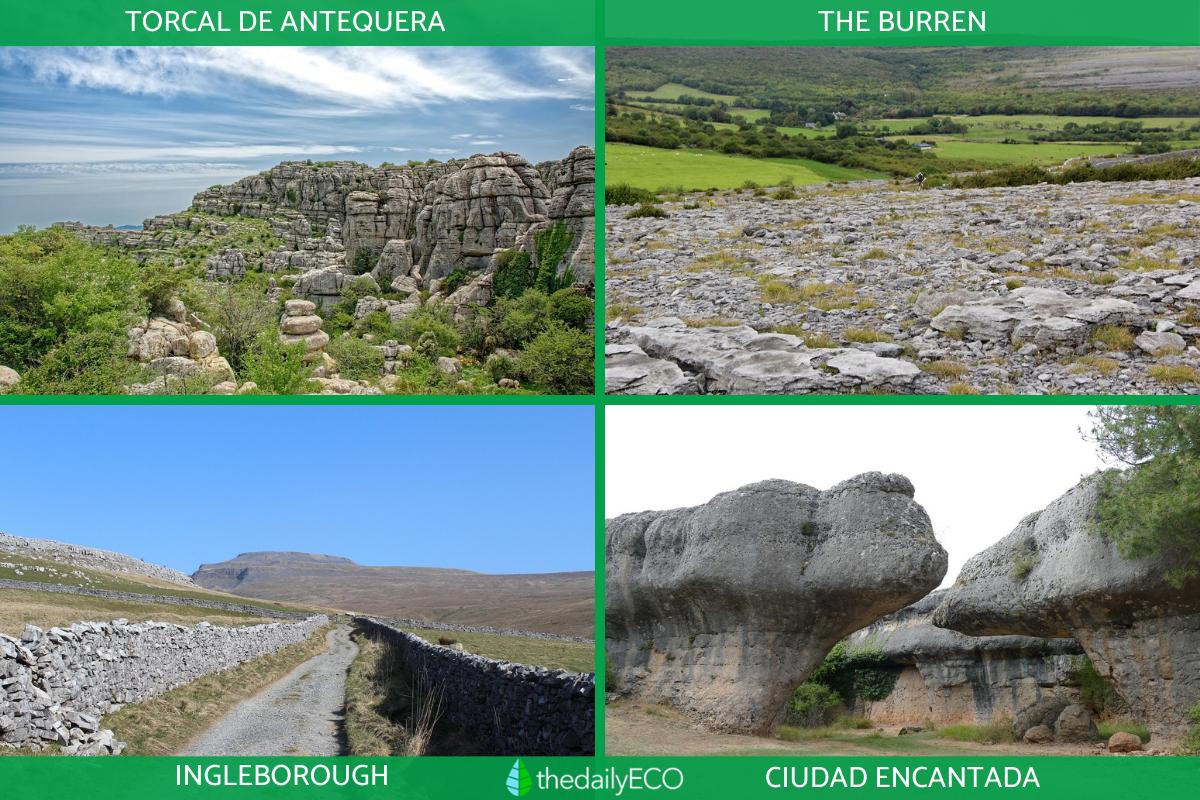What Is a Limestone Pavement?


Limestone pavements are geological formations found in limestone terrain that create an exposed flat topography which has features caused by weathering of the rock. This weathering leads to grooves, cracks and cavities which create blocks known as clints which are separated by fissures known as grikes. These structures originate from the dissolution of limestone rock by the action of slightly acidic rainwater, a process known as karstification. For this reason, limestone pavements are considered a type of karst. We learn more about the formation, types and examples of this geological feature as thedailyECO asks what is a limestone pavement?
What are limestone pavements?
Karsts are types of topographical formations caused by the dissolution of certain carbonate rocks. A limestone pavement is a type of karst which create rock formations with an irregular surface crisscrossed by grooves, cracks and cavities. These structures appear in calcareous terrain and are characterized by their eroded appearance, with channels that can be narrow and deep or wider and shallower.
The two main features of limestone pavements which are a result of this weathering are the following:
- Clints: these are the box-like structures which are irregularly shaped, but which can appear as if they are almost on a grid. From above, they almost look like buildings in a poorly designed urban areas.
- Grikes: these are the deep fissures which cause the clints to form. They create cris-crossing patterns in the terrain.
At first glance, limestone pavements may appear to be a rugged and jagged landscape, almost as if the rock had been sculpted over time by natural forces. These formations can be found in different parts of the world, especially in mountainous areas or places where the limestone rock is exposed to the elements. They are often difficult to navigate due to the uneven terrain, giving them a unique and quite beautiful appearance.

How are limestone pavements formed?
Limestone pavements are formed primarily by the action of chemical erosion of soluble carbonate rocks such as limestone or dolomite. This is a process known as karstification. This phenomenon occurs when slightly acidic rainwater comes in contact with limestone which is composed mostly of calcium carbonate (CaCO₃). The acidity of the rain is a result of carbon dioxide (CO₂) dissolved in the atmosphere and soil.
When acidic water infiltrates fissures or cracks in the rock, it reacts chemically. This chemical reaction slowly dissolves the calcium carbonate. Over time, this dissolution widens the cracks and creates grooves, channels and cavities. The process is gradual and can last thousands of years, giving rise to the complex forms that characterize limestone pavements.
The speed and intensity of limestone pavement formation depend on several factors:
- Rock composition: the purest limestones dissolve more easily due to a higher calcium carbonate content.
- Climate: the dissolution process is faster in regions with abundant rainfall and high humidity.
- Land slope: sloped surfaces promote water flow which increases erosion in certain areas.
There are different types of limestone pavement depending on their shape and size. Some have fine, parallel grooves, while others have deeper, wider cavities. In the next section, we'll show you the different types of limestone pavement that can be found in nature.
Learn more about how geological formations are created with our article on the different types of erosion in geography.
Types of limestone pavement
There are several types of limestone pavement which are classified according to their shape, size and the way they have been shaped by weathering. Each type reflects the specific conditions of the terrain and the dissolution process that has affected the limestone rock. The main types of limestone pavement are the following:
- Ridged or grooved limestone pavement: this is the most common type and is characterized by the presence of narrow, elongated channels separated by sharp ridges. These grooves are formed by the constant flow of rainwater, which gradually dissolves the rock.
- Hollow limestone pavements: characterized by the presence of small, circular or irregular cavities and depressions on the rock surface. These shapes are generated when water accumulates in specific locations, dissolving calcium carbonate in a localized manner.
- Stepped or terraced limestone pavements: this type features a series of steps or terraces formed by differential weathering. It occurs when water unevenly dissolves the rock, creating surfaces at different heights.
- Smooth or polished limestone pavements: this is a softer and less rugged variety where chemical erosion has smoothed the rock surface. It is common in areas where water flows steadily, but without forming deep grooves.
- Underground limestone pavements: forms within cave or gallery systems. Dissolution occurs due to water infiltration into deep fissures, creating hidden limestone pavements beneath the surface.
While limestone pavements are formed mostly due to weathering, some erosion may help to create the specific topography. Learn more about how water erosion creates landforms with our article asking what is a wadi in geography?

Examples of limestone pavements from around the world
As we have stated, certain areas where there is more rain and where limestone rock is a more common feature are more likely to result in the formation of limestone pavements. Some examples from around the world include:
Torcal de Antequera (Spain)
Found in the Andalusian province of Málaga, this is one of the most impressive karst landscapes in Spain and has been declared a Natural Site of National Interest. El Torcal de Antequera features an extensive limestone karst with whimsical shapes that have been sculpted by the action of acidic rainwater over millions of years. It has an average altitude of 1,200 meters, which favors weathering by rain and wind.
The Burren (Ireland)
A large karst landscape located mainly in country Clare, it ranges over 200 square miles. It has a temperate climate, but plenty of rain to help with the dissolution of the extensive limestone deposits. It also contains other sedimentary rocks such as sandstone and mudstone. It has influenced a lot of Irish culture over the years, often immortalized in song, but it is also a popular tourist destination for hikes,
Ingleborough (England)
The English Yorkshire Dales are home to some of the most extensive and beautiful limestone pavements in Europe. This karst landscape contains very deep fissures which give the clints a distinct pattern and which can be observed up high. Other limestone formations found in the Dales include underground cave systems formed by water over many million years.
Ciudad Encantada (Spain)
Translating as the Enchanted City, Ciudad Encantada is another Natural Site of National Interest in Spain, this time in La Mancha. It is famous for its limestone karsts which have clints shaped like objects, animals or humans. It is a ridged, alveolar limestone karst, with rocks molded into unusual shapes by the action of rain and wind. The Enchanted City is a prime example of differential weathering.
Tsingy de Bemaraha Strict Nature Reserve (Madagascar)
Not quite a true limestone pavement, this karst has very similar features. It is listed by UNESCO as World Heritage Site and has distinctive limestone pinnacles which are quite sharp.
Discover more about how our natural systems are made with our article explaining what is the difference between minerals, rocks and crystals?

If you want to read similar articles to What Is a Limestone Pavement?, we recommend you visit our Environment (other) category.
- The Wildlife Trusts. (n.d.). Limestone pavement
https://www.wildlifetrusts.org/habitats/rocky-habitat/limestone-pavement - Scientific Curiosities. (2014). Limestone pavements.
https://kuriosidadescientifiks.blogspot.com/2014/01/lenares-o-lapiaces.html








